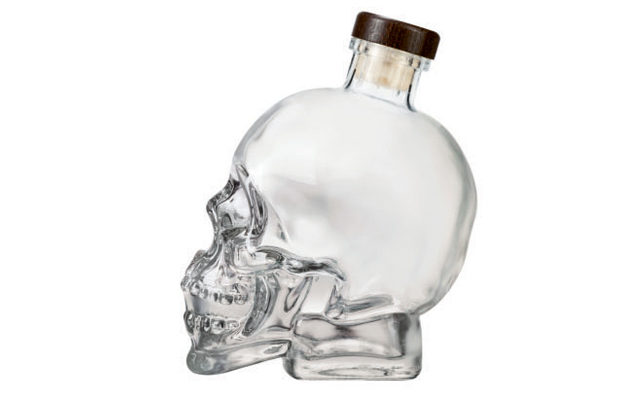
Design
Skullduggery

Journalist Katy Kiick casts a jaundiced eye on the business of liquor marketing
By any standard, Crystal Head Vodka—a three-year-old liquor just now being widely released in stores—is a juggernaut of branding. It has a celebrity purveyor (Dan Aykroyd), the manufacturers make florid claims about the purity of their product (it’s filtered through 500 million-year-old crystals!), and then there’s the bottle: a glass skull. It is this bottle that grabs me, as it is supposed to. Not for the novelty of a crystalline noggin perched on a shelf, but for what it says about contemporary design and marketing. The bottle is less a disposable container than a permanent decorative object. It was conceived of and crafted before the product it holds, it comes with a lofty pedigree of American design and Italian craftsmanship, and its creation was prompted by an esoteric archaeological mystery.
To start from the beginning: Dan Aykroyd, a self-described “actor, musician, entrepreneur, and spiritualist,” and American artist John Alexander embarked on a mission to understand the archaeological legend of the crystal skulls, which states that thirteen highly polished quartz skulls have been found around the world—remnants of ancient societies and made mysterious because they lack any sign of having been tooled. According to Crystal Head’s website, the skulls are “thought to offer spiritual power and enlightenment to those who possess them, and as such stand not as symbols of death, but of life.” Alexander designed the skull and commissioned its making to Bruni Glass of Milan, which declared the finished product “a work of unsurpassed complexity and quality.” Faced with deciding what to put into a bottle of such esteem, Aykroyd and Alexander chose vodka (their first choice—tequila—conflicted with Aykroyd’s other liquor project, Patron).
The vodka itself is made from glacial aquifer water sourced off the coast of Newfoundland. It is quadruple distilled and thrice filtered through crystals known as “Herkimer diamonds,” which, the brand claims, “share the raw material from which the original crystal heads were carved,” and assure the vodka’s chemical and even spiritual purity.
The thing about vodka, though, is that it’s not supposed to have “character.” Connoisseurs may profess to note complexities and nuances between brands, but, just before Crystal Head’s release in 2008, David Kiley of Businessweek pointed out that “as far as mass-market consumers are concerned, vodka is a flavorless, colorless alcohol that is largely indistinguishable from palate to palate.” In fact, the United States Government defines vodka as a “neutral spirit so distilled as to be without distinctive character, aroma, taste, or color.” Vodka, Kiley observed, was “made for advertising, as every vodka that comes down the pike is pretty much a blank canvas.”
This idea is supported by the avalanche of marketing campaigns focused on reaching consumers with uniquely designed and packaged bottles and distinctive print ads. Through the simple act of a purchase, buyers essentially don the style ensconced in the marketing campaign of their brand of choice and thus gain so much more than an aroma-less, tasteless, colorless beverage. In the case of Crystal Head, the bottle is meant to be retained long after its contents have been depleted, a convenient at-home signifier of the enlightenment and design savvy of its owner.
All this can be yours for about $50 a bottle.












